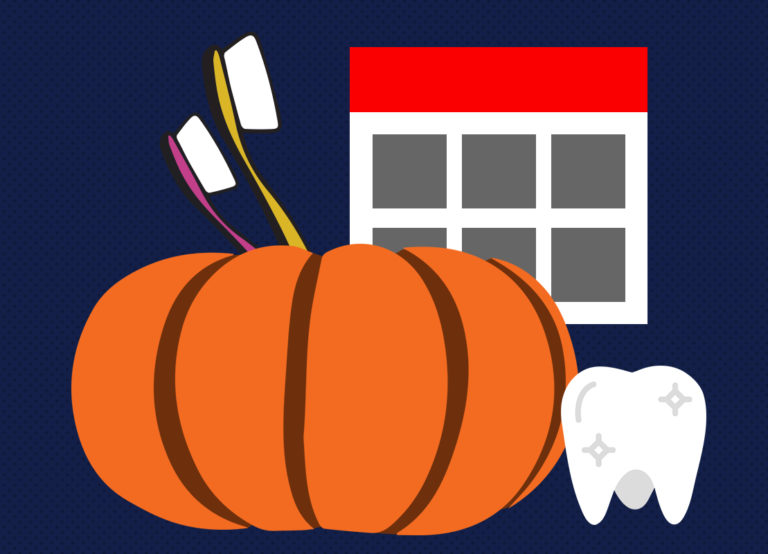
If you were to take a schoolbook photo, wedding engagement photo, or anniversary photo in three hours, would your smile be ready for it? Despite your greatest efforts to maintain good oral health practices, it’s easy to overlook a few spots in your mouth or to not use the best methods of flossing and brushing. We usually provide you with suggestions during your dental cleanings, but in honor of National Dental Hygiene Month, here are a few tips about flossing and brushing, just as a reminder.
Proper Tooth Brushing Techniques
- Select a toothbrush that fits your mouth, is comfortable in your hand, and works well with the structure of your teeth – one that allows you to get into those hard-to-reach spots.
- As you’re brushing, hold the toothbrush at a 45-degree angle to your gums.
- Use short back and forth strokes if you’re using a manual toothbrush. If you’re using an electric toothbrush, start at the top of each tooth near the gumline and gently roll down toward the chewing surface; do not apply too much pressure, as it could damage your gums and tooth enamel.
- Brush all surfaces of your teeth, including the inside, outside, and chewing surface.
- The inside of the front of the teeth can be awkward, but tilting the brush vertically and moving the brush up and down is the most effective way to clean this area.
- Don’t forget to brush your tongue, which holds more bacteria than your teeth, and the roof of your mouth. Doing so will help keep your breath fresher throughout the day and help prevent tooth decay.
- Brush for 2 minutes twice a day.
Proper Flossing Techniques
- Start with about 18 inches of floss. Wind most of it around one of your middle fingers and the rest around the middle finger of the other hand, leaving an inch or two of floss between both hands. The finger that has less floss around it will be used to take up the floss as it becomes dirty.
- Hold the floss between your forefingers and thumbs.
- Using a gentle rubbing motion, guide the floss between your teeth. Do not snap the floss into the gums, as that could tear the gums and cause them to bleed.
- When the floss reaches the gum line of the side of each tooth, curve it into a C shape against the tooth, providing a more thorough cleaning motion, and slide the floss down to the chewing surface of each tooth.
- Use a fresh section of the floss every time you move between teeth by loosening floss from the finger that has the bulk of the floss around it and taking up the dirty section with the middle finger of the opposite hand.
Tips about Mouthwash Use
- Mouthwash is not a substitute for proper flossing and brushing, but it can complement your dental hygiene routine.
- Choose mouthwash that is alcohol-free. Alcohol dries your mouth, and a dry mouth could lead to other types of dental problems.
- Swish for at least 30 seconds, up to a minute.
- Gargling can help kill the bacteria at the back of your throat.
National Dental Hygiene Month: The Perfect Reminder to Set Your Appointment
The one dental hygiene tip we didn’t discuss is a big one: remember to get those professional dental cleanings every six months. In addition to providing you with a clean slate, so to speak, for the next six months, a dental hygienist can offer additional tips and help identify more serious dental issues that could be arising.
If you’re due for a dental cleaning, call us today at (313) 379-5726 or visit our website to set an appointment.
